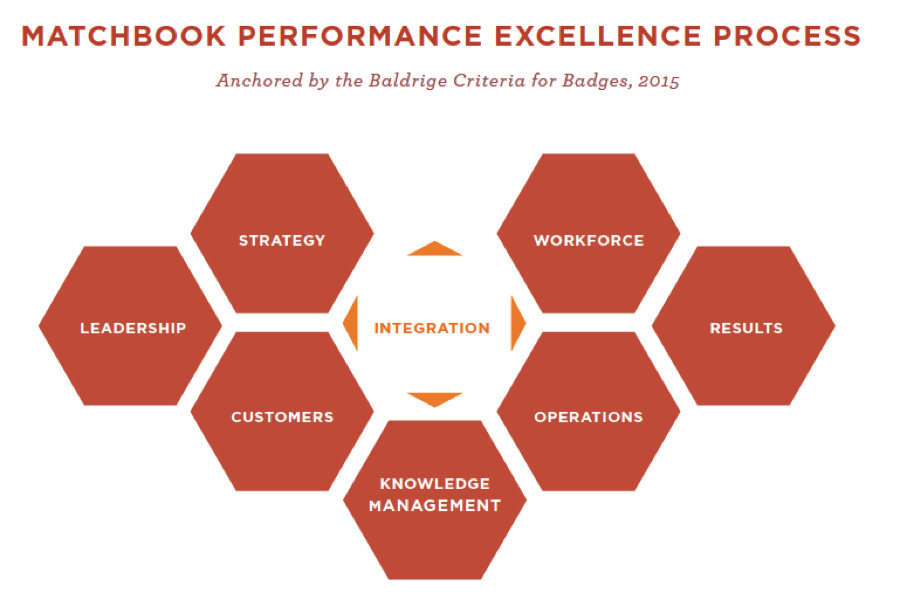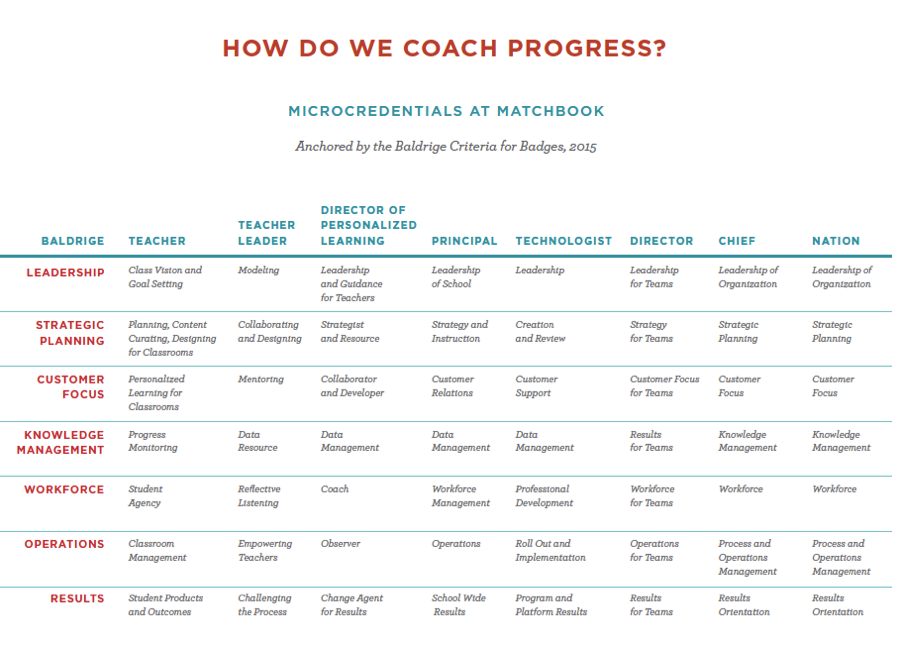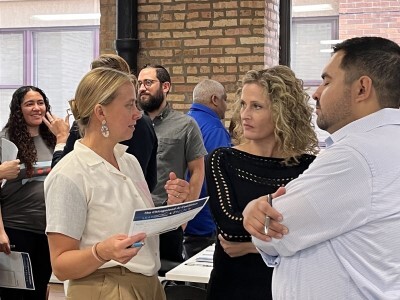Professional Learning
Training Teachers for Competency-Based Learning Classrooms
Topics

Educators are the lead learners in schools. If they are to enable powerful, authentic, deep learning among their students, they need to live that kind of learning and professional culture themselves. When everyone is part of that experiential through-line, that’s when next generation learning thrives.
Matchbook Learning has learned that training teachers on competency-based models requires three design principles: form, motivation, evidence.
While competency-based learning is not new to the education industry, there are still challenges in implementation. The biggest impediment to launching such a model is not the technology, content, or standards mapping—it is in how we train our teachers. To effectively deliver competency-based learning strategies in our schools, we also need a strategy on how to best teach the teachers those particular strategies.
At Matchbook Learning, a national non-profit charter management operator, we have continually revised and refined our professional development training for teachers at three levels: the charter schools we operate in Newark and Detroit, the schools we’ve partnered with, and the schools we will be indirectly partnering with through “Spark,” our virtual competency-based learning platform. In our explorations, we have learned that training teachers on competency-based models requires three design principles:
1. Design for Form (Not Just Function)
The form training takes is as important as its function. When teachers receive this training, it should be experienced in a competency-based manner. From the outset, this requires identifying the core competencies for every core position in your organization (i.e. teachers, deans, principals, operations, etc.).
We have identified seven macro competencies or domains that every person in our organization should master, modeled after the national criteria used by organizations across the country in search of world-class distinction. Whether you use Baldridge or some other industry analog, competency development must be mapped against pathways with multiple entry and exit points. If you are explaining your training in whole group seminars or singular pathways, you are NOT delivering the training in a competency-based way. Competency-based training must happen in both form and function. The medium is the message. For our work, we anchor the start of our journey in the seven core criteria of the Baldrige excellence process below:

2. Design for Motivation
If you build it, will they come?
Trainers, professional and amateur alike, try their best to create and deliver great content. But great content without proper motivation is like a baseball field with no players. Most professional development sessions in schools are delivered without much thought to motivation. You learn it because you have to and you have to because it’s your job.
To tackle the motivation challenge, we’ve mapped all of our competencies to foster autonomy, purpose, and mastery via digital badges that teachers earn and can share on social media, post on their LinkedIn profiles, and accumulate CEU credit from an accredited institution.
Below is a visual representation of a teacher’s professional development journey through our “passport” system, which keeps track of the badges they’ve earned and the ones they have left to master.

3. Design for Evidence
In the movie Jerry Maguire, Tom Cruise, playing the role of a desperate sports agent, screams the famous line, “show me the money,” to his NFL player client who demands tangible results. What he’s saying is that talking about success is insufficient—he wants to see evidence. We agree. An effective professional development program needs to be able to “show me the evidence” because without evidence, we cannot demonstrate mastery.
At Matchbook Learning, we hold a professional development workshop every 90 days with our entire staff where employees present on their badges and evidence of how they earned them. One of our teachers working on the Strategy Badge might present his Unit Plans for every student. One of our principals working on the Knowledge Management Badge might present a school data wall she created with weekly student achievement, teacher development, and operational data that is both physical and digital and updated weekly. This gives us a sense of readiness by staff position, school, and functional area across our various competencies.

When we launched Matchbook Learning just over five years ago, there were many constraints to implementing a competency-based approach including aligning digital content and assessments to standards, aligning standards across states, and finding adaptive assessments that had the right duration, frequency, and age-appropriate environments to accurately identify starting and ending competency levels. The model has come a long way since then, but we still need more schools implementing competency-based approaches so that a broader national learning curve can begin to take hold and benefit both new and rising implementers.
If you are considering whether to implement and scale a competency-based approach across classrooms, and your key barrier is how to best train your staff, consider the design of your training in three areas: i) form, ii) motivation, and iii) evidence of achievement or success. As we learn how this approach works in our own schools, as well as schools we partner directly and indirectly with, we’ll share new design principles as we experience them.




